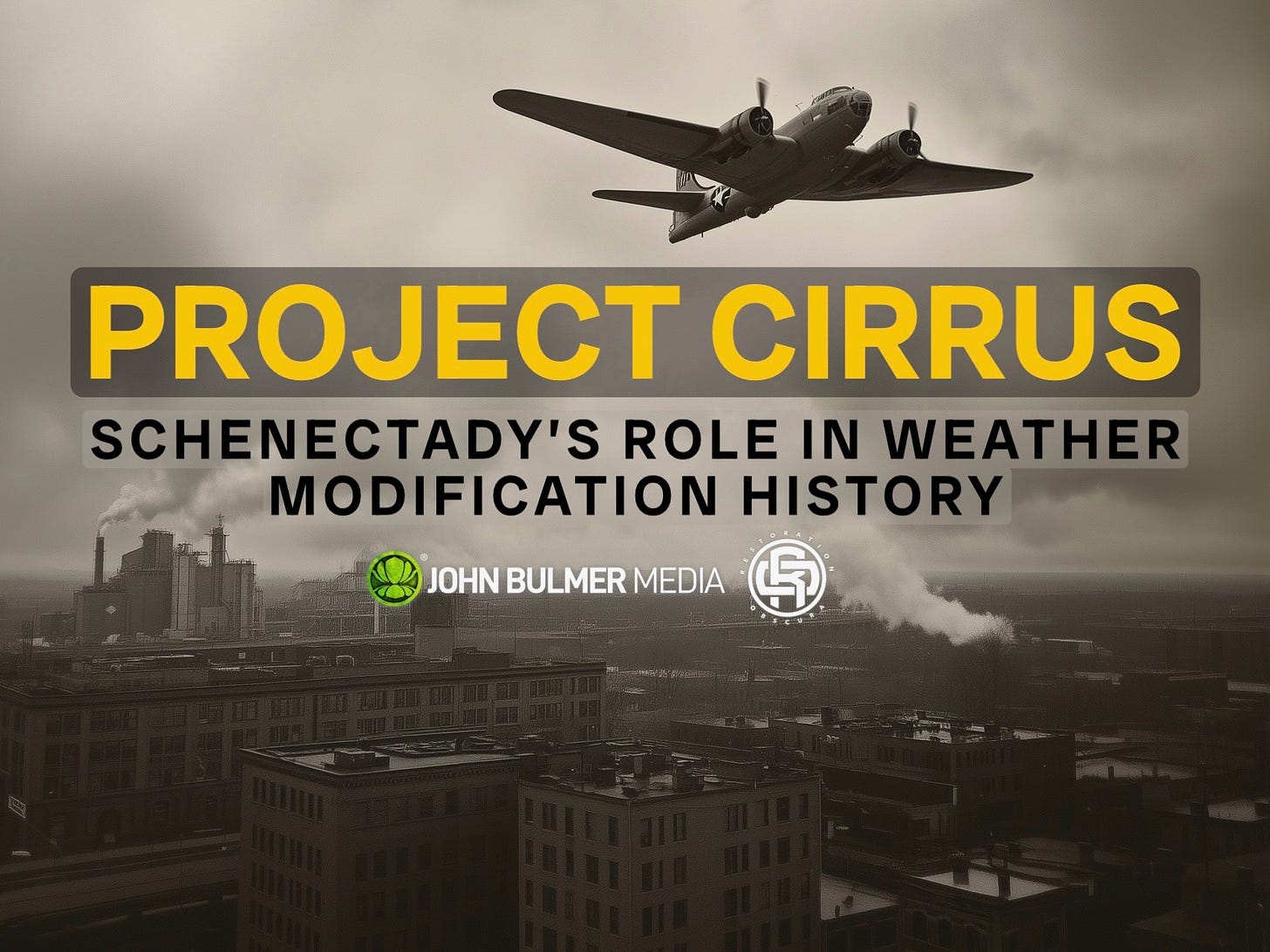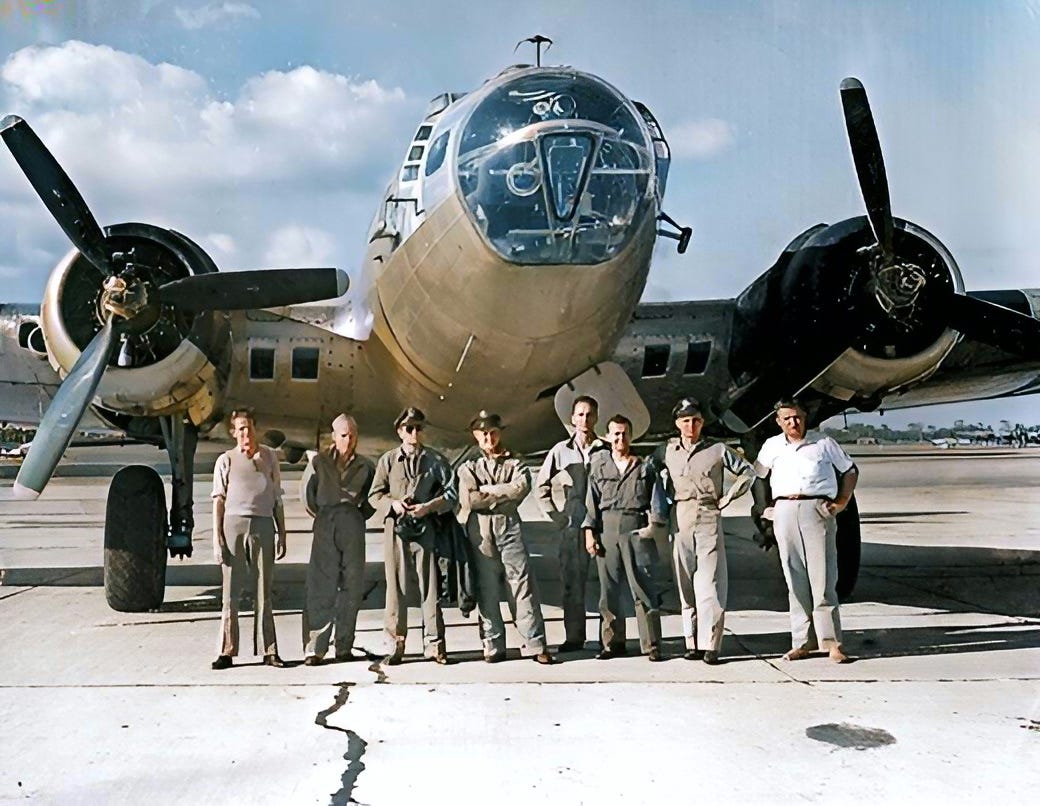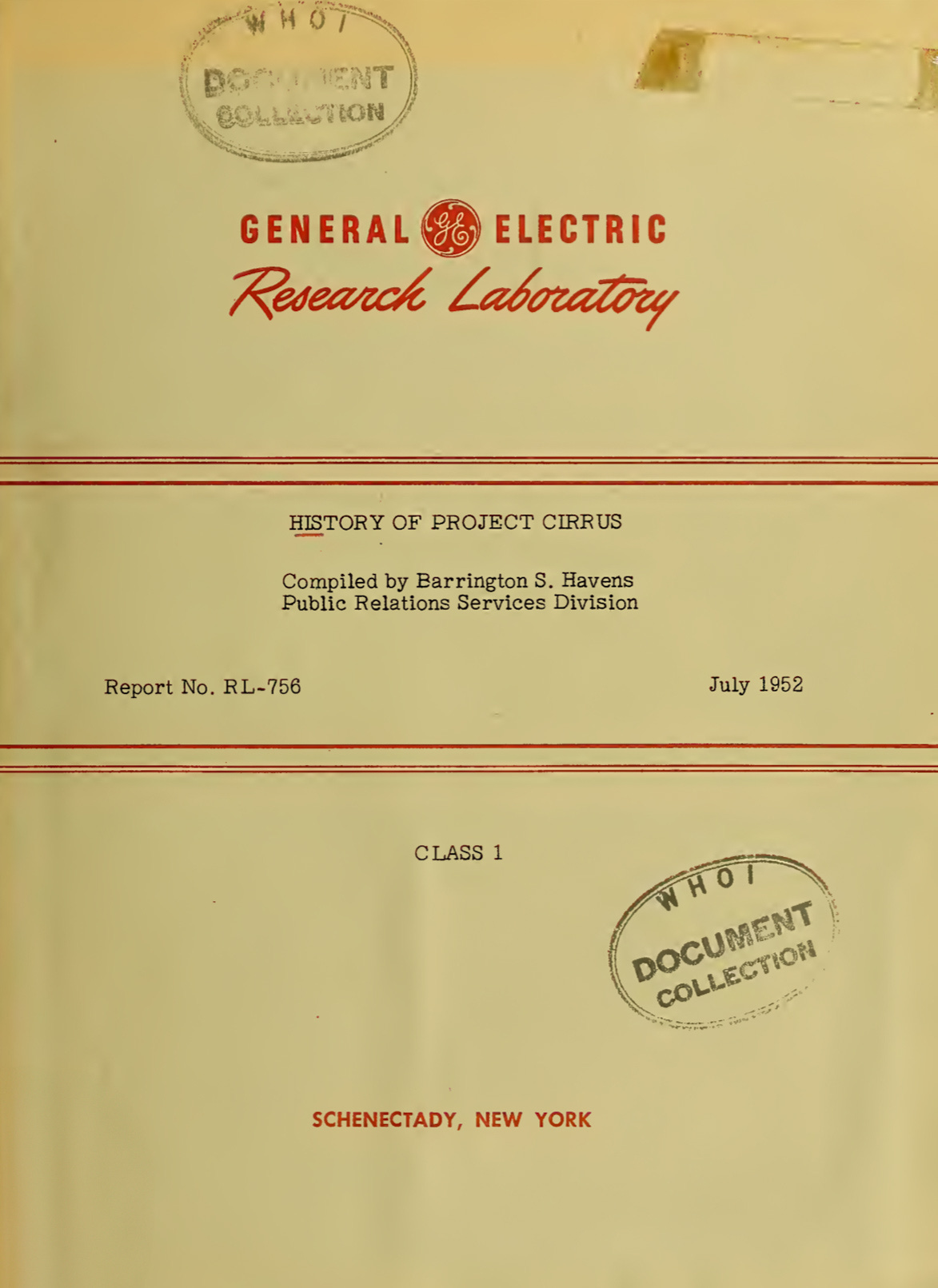In the late 1940s, Schenectady, New York, became the unlikely cradle of a scientific endeavor that blurred the lines between innovation and science fiction. Within General Electric's research labs, Nobel laureate Irving Langmuir and machinist-turned-meteorologist Vincent Schaefer embarked on a quest to control the weather. Their experiments led to the development of cloud seeding techniques using dry ice and silver iodide, culminating in Project Cirrus — the United States' first concerted effort to modify weather patterns. This ambitious project aimed to dissipate fog, induce rain, and even weaken hurricanes.
However, an attempt in October 1947 to alter a hurricane’s path resulted in the storm veering unexpectedly into Savannah, Georgia, causing significant damage and public uproar. Though Project Cirrus was eventually discontinued, its legacy endures, marking Schenectady’s pivotal role in the nascent field of weather modification and raising enduring questions about humanity’s capacity to command nature.
In the uneasy calm that followed World War II, Schenectady buzzed with a different kind of urgency. The war was over, but its momentum hadn’t stopped — it had shifted. In quiet labs and humming factories, the next war was already being imagined, not on battlefields, but in laboratories and skies.
Schenectady was more than an industrial city; it was a proving ground for postwar possibility. Inside the sprawling complex of General Electric, engineers and scientists weren’t just refining appliances — they were building engines for fighter planes, assembling radar systems, testing the future. GE’s fingerprints were everywhere: on the turbochargers that powered Allied bombers, the electronic countermeasures that jammed enemy signals, and the atomic research that would redefine warfare in the nuclear age.
As the Cold War dawned, the city’s role deepened. Schenectady became a place where science met secrecy. It was a city alive with invention and anxiety. And it was here, in this charged atmosphere, that a group of GE scientists looked up and began to wonder: Could weather be controlled?
GE had helped usher in the jet age with the development of America’s first jet engine. It led advancements in radar and counter-radar systems, and its work on electronic countermeasures helped define the new frontier of electronic warfare. The company’s Knolls Atomic Power Laboratory, just outside the city, became a cornerstone of the U.S. Navy’s nuclear propulsion program, powering submarines that could vanish beneath the polar ice cap and into deep oceans, poised for a war that never quite arrived. Even the skies above Schenectady played a role in the strategic theater: GE quietly contributed to satellite tracking and early remote sensing, bridging the Cold War and the Space Race.
It was a city of factories and labs — a place where engineers and scientists dreamed of mastering the elements themselves. And for a brief moment, they almost believed they could.
At the heart of that ambition was Project Cirrus.
Launched in 1947 and rooted in the research labs of General Electric, Project Cirrus was the United States’ first sustained effort to control the weather. It began with a breath — the visible cloud from Vincent Schaefer’s exhale inside a modified freezer chamber at GE’s research lab. Add a pinch of dry ice, and that breath turned instantly to snow.
It was beautiful. And it was dangerous.
This was no parlor trick. This was the moment science stepped across a threshold. If clouds could be made to snow on command, what else could be summoned or silenced from the skies?
What followed was a sprawling, secretive experiment that stretched from the Adirondack peaks to the eye of a hurricane. And right in the center of it all was Schenectady.
Before Cirrus, weather was something to be endured. Farmers hoped. Pilots feared. But no one dared believe it could be changed. Until Schaefer and Langmuir.
Schaefer was no academic. He never went to college. He was a machinist, a tinkerer — a man who understood the mechanics of the physical world by touch and instinct. Langmuir, a Nobel Prize-winning chemist, brought theory and prestige. Obsessed with the sky, Langmuir saw in Schaefer the perfect partner.
Their collaboration began with wartime research: smoke screens, anti-icing coatings, and secret atmospheric studies atop GE’s hilltop labs. But it was in 1946 that they crossed into the unknown. In a velvet-lined freezer chamber, Schaefer introduced dry ice to supercooled water vapor. A snowstorm burst to life.
On November 13, 1946, he brought the experiment into the air. From a plane flying out of Schenectady County Airport, Schaefer released crushed dry ice into a cloud bank over western Massachusetts. Snow fell — not hours later, but immediately. The cloud collapsed.
Langmuir watched from the GE tower. And the military listened.
By 1947, Project Cirrus was born — a joint venture between the U.S. Army Signal Corps, the Navy, the Air Force, and GE. Its mission: understand clouds, then command them. The potential was staggering: clear skies for bombers, rain on command, even hurricane deflection.
Schenectady became the nerve center of atmospheric manipulation.
To the military, weather wasn’t just a natural force — it was a battlefield variable. Rain could stall supply lines. Fog could blind enemy scouts. Storms could ground entire air fleets. Project Cirrus offered a new frontier: the power to shape tactical conditions before the first shot was fired.
Even slight shifts in visibility or timing could tip the balance. If a rainstorm could bog down tanks or clear skies could guide bombers, the implications were immense. Weather — once uncontrollable and impartial — could now be turned into an ally or a weapon.
Some strategists envisioned even broader effects: delayed monsoons, accelerated droughts, hurricanes diverted toward hostile shores. Cirrus wasn’t just about local advantage — it gestured toward environmental warfare. The project blurred the line between climate and command, pushing science into realms once reserved for mythology.
This wasn’t simply about clearing skies. It was the unsettling dream, or nightmare, of mastering nature in service of geopolitical power.
In the eyes of military planners, weather control wasn’t science fiction. It was the next evolution in shaping battle spaces. Conflict zones wouldn’t be defined solely by geography, but by engineered conditions — skies tailored to military need.
Project Cirrus hinted at this future: a war not just fought in the air, but with the air. The battlefield of tomorrow, they believed, might begin in the clouds.
Download the original 1952 General Electric Research Labs report on Project Cirrus.
The Adirondacks weren’t just a scenic backdrop — they were the site of history’s first successful cloud seeding experiment. On November 13, 1946, General Electric researcher Vincent Schaefer released crushed dry ice into a supercooled cloud over the mountains, triggering artificial snowfall and marking a turning point in weather modification science. The region’s rugged topography and varied atmospheric conditions made it a natural laboratory, while its proximity to GE’s Schenectady lab ensured quick coordination between theory and test flights. Though later missions under Project Cirrus expanded beyond the Adirondacks, this was where weather control took flight.
Cirrus flights extended across eastern New York — from the Mohawk Valley to the Schoharie Basin and beyond — chosen for their atmospheric diversity and proximity to GE’s labs.
The early seeding flights read like speculative fiction:
December 1946: Dry ice is dropped into an overcast sky north of the Mohawk Valley. Drizzle halts. Snow begins to fall. That same day, Schenectady receives its heaviest snowfall of the season. Coincidence? Maybe.
April 1947: A B-17 carves a 45-square-mile hole in a cloud deck — a deliberate, geometric wound in the sky. This isn’t spectacle; it’s data collection. Patterned flights — circles, gammas, racetracks — help trace atmospheric response.
Schoharie Valley, 1949: Bernard Vonnegut (yes, Kurt’s brother) introduces silver iodide to the arsenal. Unlike dry ice, which cools, AgI works by mimicry, triggering snow formation at warmer temperatures. Ground-based seeding begins in rural hilltops.
These were no isolated stunts. They were methodical, strategic, and often quietly conducted with military precision.
The Hurricane and the Backlash
Then came the hurricane.
In October 1947, a B-17 modified for Project Cirrus flew into Hurricane King off the coast of Georgia. The plan: drop nearly 80 pounds of dry ice into the eye wall. The hope: weaken the storm.
Instead, the hurricane pivoted.
It had been tracking northeast, expected to fizzle out over the ocean. But post-seeding, it turned sharply west, slamming into Savannah, Georgia. Trees snapped. Roofs lifted. Two million dollars in damage.
Langmuir stepped to the microphones. He was “99% sure” the experiment had altered the hurricane’s path. His enthusiasm backfired.
If Cirrus could redirect a storm, could it weaponize one?
Public outrage followed. Lawsuits were threatened. GE distanced itself. The military fell silent. What had looked like progress suddenly felt like hubris.
Though Cirrus lingered as a name, the Savannah incident marked its undoing. Weather control — especially involving hurricanes — became taboo. But its influence never left.
After Project Cirrus
Project Cirrus officially ended in 1952. But its shadow stretches long.
Its techniques — dry ice seeding, silver iodide dispersal, atmospheric modeling — were inherited by Project STORMFURY in the 1960s. STORMFURY was more conservative, more structured, but its DNA was unmistakably Cirrus.
Elsewhere, weather modification found quieter uses. Western states seeded clouds to combat drought. Ski resorts summoned snow. Agricultural regions manipulated rainfall. What began over Schroon Lake and Sacandaga had gone national.
But the heart of Cirrus returned home.
In 1961, Vincent Schaefer helped found the Atmospheric Sciences Research Center (ASRC) at SUNY Albany. He brought with him former Cirrus collaborators — Vonnegut, Wexler, Blanchard. Together, they redirected their focus from command to comprehension. From control to understanding.
ASRC remains a regional powerhouse in atmospheric research. Not to alter storms, but to map their origins. Not to steer weather, but to study its patterns. The mission has changed. The urgency has not.
Cirrus pushed the boundaries of ambition — and revealed the need for caution.
Long after the final Cirrus flight, weather control lived on — not just in labs, but in the public imagination. It became plot and paranoia. The subject of thrillers, the seed of conspiracy, the premise of disaster films.
Pop culture ran with the idea. Geostorm, The Day After Tomorrow, countless novels, and cartoons — all hinted at a world where storms could be summoned or stilled. Weather, once sacred, became programmable.
The truth is quieter. More haunting.
The skies above Schenectady seem ordinary now. But in the 1940s, they were marked by a moment when we tried to master the weather — and learned instead how little of it we truly understood.
Restoration Obscura
Restoration Obscura is where lost history comes back to life — in words, in images, and in the forgotten places still waiting to be found. These stories aren’t scraped from Wikipedia. They’re dug from the archives, walked in the field, and told with care.
If you believe the past still matters — if you believe in slowing down, looking closer, and preserving what time tries to erase — I hope you’ll join me here.
Subscribe to support independent, reader-powered history. Get every story delivered straight to you.
What is Restoration Obscura?
The name Restoration Obscura is a nod to the earliest days of photography. The camera obscura — Latin for “dark chamber” — was a simple box that transformed light into shadow and shadow into fleeting image. This project turns that concept on its head. Instead of watching the past fade, Restoration Obscura brings forgotten stories back into focus.
But this isn’t just about photographs. This is about memory.
Restoration Obscura blends archival research, image restoration, investigative storytelling, and historical interpretation to uncover the stories we’ve misplaced — moments erased, overlooked, or deliberately forgotten. Whether it’s an unsolved mystery, a buried ruin, or a yellowed photograph rescued from an attic, each story is a fragment of something larger. This work connects the dots.
History isn’t static. It shifts depending on where you stand and what you choose to see. Restoration Obscura is about making the past tactile and real again — reframing forgotten places, people, and events in a way that resonates with the present.
If you enjoy stories like these, you can subscribe to Restoration Obscura on Substack to receive new investigations directly to your inbox.
Visit www.restorationobscura.com to learn more.
The Restoration Obscura Field Guide Podcast is now streaming on all major platforms, including Spotify, Amazon Music, Apple Podcasts, Audible, and YouTube Music.
Explore the full archive of my visual and written work at www.johnbulmermedia.com.
Every Photo Has a Story. And Every Story Connects Us.
© 2025 John Bulmer Media & Restoration Obscura. All rights reserved. Content is for educational purposes only.
Permissions Statement
Restoration Obscura may not hold copyright for all images featured in its archives or publications. For uses beyond educational or non-commercial purposes, please contact the institution or original source that provided the image.







